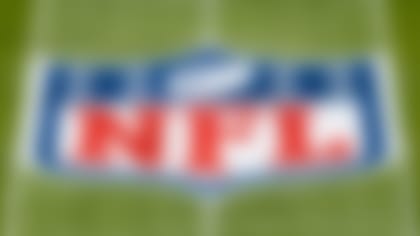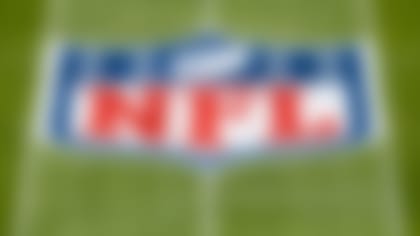The NFL hosted a media briefing on Wednesday, August 16 to discuss player health and safety, highlighting advances in protective equipment, injury prevention initiatives, and rules changes for the 2023 season.
Spokesperson:
- Jeff Miller, NFL Executive Vice President of Communications, Public Affairs & Policy
Jeff Miller: Good morning, everybody. I got a chance to share some of the insights that we've had on Health and Safety in anticipation of this year and some changes that we've made to the game – whether this be equipment or rules, which I'll go over. And then just a couple of reminders, which I'm happy to share with this group as well, about certain Health and Safety protocols or policies that we have in place that have gotten some attention, and certainly a lot of questions, from last year that are still in place for this year. So with that as a real brief background, let me jump into a couple of things that you will see on the field, starting with equipment – Guardian Cap being the first one.
We used them, the Guardian Cap, for the first time last year in preseason practices up until the second preseason games – for a rather limited amount of time. We used it for certain specific position groups – offensive and defensive linemen, tight ends and linebackers. Those positions were chosen because those groups have the most frequent head contact. The Guardian Cap had been tested, as many of you know, in a lab. We found that we would expect a decrease of about 15-20% of each helmet-to-helmet impact when a Guardian Cap was worn by both players. And that proved to be the case last year. We saw exactly that range of decrease in each individual impact. But we also saw – and this part was more substantial, though somewhat unexpected – about a 52% decrease in the number of concussions suffered by those position groups during that period of time, compared to a three year average. So again, up until the second preseason game, and compared to a three year average, we saw a 52% decrease in the number of concussions suffered by players at those position groups. So as a result, we expanded the use of the Guardian Cap this year. You'll see it on all those position groups, plus running backs, this year and throughout the entirety of the preseason, as well as contact practices in the regular season for all the reasons that you can assume, which is that it was seen as a benefit to player safety.
Again, the concussion numbers will be what they are, and we will report those out to you when we have them over the course of the season. But more importantly, in many ways, is around the individual impacts that players experience. Decreasing each of those 15-20% over the course of a preseason or a season is a substantial cumulative decrease in force. And that's really important to us, especially in those positions where players are using their heads more. That was the mandate for this year. We had some feedback from the player population last year around the fit, around slippage, around heat – all things that we took a look at and shared back with the manufacturer and ended up with a redesigned Guardian Cap this year. It's a little bit different, it fits a little better, comes in more variety of sizes, hopefully slips less – that's something that we are going to talk to the player population about as we move forward in the preseason and gauge their interest. We tested it in two different university laboratories around heat and didn't see any increase in the ambient heat saved within the player helmet when those were worn, which was good – assuming that they wear light colored ones. And we didn't see any additional forces to players' necks or additional numbers of stingers. Those were all concerns of ours that we had when we used the Guardian Cap last year and led us to make that decision to use it this year. So again, you'll see more of it, one more position group, wearing it a lot longer in camp. Last year, about 150 players chose to wear it throughout the course of the season, so you'll see more players wearing it by mandate this year, but also some voluntarily choosing to do it. So that's one change.
On the topic of helmets, point two. For this year, for the first time, we're seeing position-specific helmets. We've talked about that for some period of time over the last five or six years, as we've worked to better understand the impacts on fields and better understand the quality and characteristics of the helmets as they relate to the forces and impacts that players experienced. We came to a conclusion very early on, as many of you know, that each position group sees the world a little differently, experiences the game differently. And so we've been able, with the engineers, to design tests that replicate what a specific position group experiences. In this case, offensive and defensive linemen as one group, quarterbacks as another. The frequency of the forces, the magnitude of those forces, the direction and location of those forces when players experience head contacts are very different. So, the testing for the helmets related to those has been created and is also different. Let me add, too, that we worked very closely with the Players Association on this.
One company, called Vicis, created an offensive linemen / defensive lineman specific helmet last year. It wasn't worn by much[sic]. It came to us, and it was introduced later in the year. It adds a level of protection, a bumper of sorts, up here on the forehead where linemen experience more helmet impacts. The same company, Vicis, has created a quarterback-specific helmet this year, which tests against the sorts of impacts that quarterbacks experienced 40 to 50% better in terms of mitigating force and other helmets that are available. And those forces, as many of you know, are when quarterbacks have concussions, their helmets hit the ground. About 50% of the time last year in quarterback concussions, it was the back of their helmet contacting the ground, and that dynamic is pretty easy to understand. Oftentimes, you're getting sacked or holding on to the ball, they're not bracing for impact and their head is hitting the ground. And so in the areas where their head does, in fact, hit the ground, Vicis has added a fair amount of padding on the inside of the helmet, and in the lab, tested 40 or so percent better against those sorts of impacts. We have some quarterbacks around the league trying it this year. We will see more position-specific helmets over the course of the next few seasons as we understand more and more about that.
Switching off helmets, going to rules – kickoff was a Health and Safety-driven rules change this past year. The basis for that – and the information shared with the Competition Committee – was that on the kickoff in your average year, the rate of concussion on kickoffs is about twice that from run and pass plays. So, a significant difference. That's been true over the last few years. Even though kickoffs did have a decrease in concussions a couple of years ago when the wedge was taken out and some other rules changes were made – blindside blocks as an example – but the number of concussions on that play has gone back up and is about double from a run and pass play. In part, that's because more kicks have been returned over the last couple of years. And as you take a look at that play, the space and the speed among the players who are blocking and/or tackling is substantial. Obviously, the play is very open – the forces in the contact between players is substantial – and that has led to a number of those concussions. So as a result, we shared with the Competition Committee that data. They chose to institute a rule for one year to see how it would work. This fair catch, similar to the college rule on the kickoff, you don't have to fair catch the ball. But if you do, you get the ball out on the 25-yard line. That can decrease by a modest amount the number of kicks returned. Our modeling shows that about 38% of kicks were returned last year. This year should be in the neighborhood of about 31%. And that should lead to about a 15% decrease in concussions on the kickoff alone. Again, I mentioned it's a one-year rule. The Competition Committee wants to continue to study the kickoff. They charged the Health and Safety group with studying the kickoff, looking at alternatives with the goal of keeping the kickoff in the game, but finding ways to decrease the risk to player health associated with that play. Ultimately, what the Competition Committee decided and that the owners approved was that the data was so stark that we had to do something on the kickoff while we continue to look for longer term solutions to that problem.
Moving off rules for a sec. A couple other topics that we've covered with our network partners include the acclimation period at the beginning of the preseason. We started this last year with the data that was supplied by all 32 clubs to take a look at the first few days of training camp, where we've seen the greatest number of injuries, specifically lower-extremity injuries. Players who are starting off the first few days of training camp, the first few days of contact practices, and dealing with oftentimes hamstring strains or calf strains or adductor strains, and in each club, having three or four players where that plagues them due to recurrences of those injuries throughout the course of the season. As a result of the data that was shared – where we took a look at accelerations and decelerations in loads, in time on field and other data points – we instituted and a modest ramp-up period, day-over-day increase in the amount of time the players would be on field, and then a re-ramp after helmets went on. And last year, as a result of those modest changes, we saw about a 26% decrease in injuries suffered during that acclimation period – the first eight or nine days where we're seeing that density of injuries – and we saw the saving on those injuries pull through the rest of the preseason and into the regular season. So we'll be taking a look at that information again this year that is shared by the clubs and probably becoming a little bit more prescriptive with how they do the acclimation period. At the same time, we introduced to all 32 clubs this year what we're we've called the Digital Athlete, which is a modeling program based on sensors so that the clubs can take a look at player loads, have a better appreciation for how they compare against all other 31 teams and how their individual players compare to other players so that they can have a better sense as to when to pull back, when to ramp up, when to go harder, or to more moderate preseason practices. So these are the sorts of tools that we're developing in the hope that we can get to a better ramp up and safer time period and hopefully replicate the injury savings from last year.
Last point, and then I'll take some questions. And this came at the behest of many questions that we've gotten from network partners as well as many of you around the Emergency Action Plan. Obviously, that was something that was much in the news after the events of Jan. 2 last year. So just as a primer, we have at least 30 medical experts – that's doctors and trainers, unaffiliated with the league and affiliated with the clubs – at any game. And that's true of any game – regular season, preseason, international games, etc. And an important aspect of what those on-field doctors and trainers do is have a plan – which is approved by the NFL and the NFLPA, both for their stadium as well as their practice facility – and that they must rehearse, should there be any set of emergencies that happen on-field including Sudden Cardiac Arrest, as we saw last January with Damar Hamlin. So the point that I've shared with the broadcasters is that these are mandatory Emergency Action Plans, reviewed every year – resubmitted every year, practiced every year – by people who are experts in their fields – whether that be airway management positions, emergency doctors, others – who have specific expertise for handling these sorts of things, as well as how and when to transport individuals to a Level I Trauma Center, which is connected to each stadium as part of the plan. They know where they're going when the ambulance leaves the stadium, and it's been rehearsed and practiced, and the communication is there. We've also shared broadly the 60 Minute Meeting, where all of the league doctors and trainers are together with the head official, the referee, at each stadium before a game – 60 minutes before a game, hence the name – where they can make sure that everybody knows what everybody's role is and that they met and shared any information that needs to be shared: 'Who's going to lead in a particular circumstance? What is an all-call signal if they need more medical support? Who can the referee look to if there is something that he needs from a trainer or a doctor on either sideline?' It's proven very effective from a communications perspective, and certainly, the sorts of drilling and communication and practice led to the result, thankfully, that we saw on Jan. 2 in Cincinnati. It's been my contention that the same – and it is true – the same plan or practice would have gone on at any one of our stadiums, with the same level of medical expertise and training and practice, should that emergency happen elsewhere. And thankfully, it all worked out to the better [sic]due to the heroic nature of the medical staff, but also, of course, of Damar Hamlin.
So, happy to take questions. Just want to make sure everybody has an appreciation for what goes into that, and happy to take questions on it so that you're straight on that as well.
REPORTER: Jeff, you mentioned sort of the process with kickoffs and the Health and Safety group being charged with continuing to look at it. Can you sort of describe what that process will look like? It seems like there's a great deal of urgency attached to this; will it be a different looking process than what you normally go through in over a year? And is the charge here – the goal here, whatever you want to call it – to have sort of a more lasting and maybe sweeping set of proposals to make by the time this one year rule expires?
Miller: Yeah, I think you identified the issues well. I don't think anyone's satisfied with where we are on the kickoff playing, generally. We both want a play where there's more kicks returned, because obviously it's an exciting play, and yet we want to limit some of the risks associated with it, which we can measure and we see year-over-year. Is it possible to do both of those things? I think the answer is yes – but we need some creative solutions as to how. Certainly, special teams coaches and coaches more generally across the league have been talking about this and our football group is going to talk to them throughout the course of the season and into the offseason, so that we can analyze any suggestions that they have as potential longer term solutions. There have been other ideas have been raised. For example, there's been a little bit in the media around the XFL rule, which is – for those of you who don't know it – you still have the a typical kickoff, except that the offensive team's – the kicking team's – players, other than the kicker, are much further downfield, and the returning team's blockers are also downfield, and they're only about 10 yards apart – or five yards apart or whatever the number is – therefore minimizing the size of the impacts when blocking occurs. There isn't the sort of speed that there would be otherwise. So we're studying that. Is that a feasible solution both from an injury perspective as well as an opportunity to bring the kickoff more vibrantly back into the game? If there's other solutions that people suggest from other leagues, or other ideas – I know that our Competition Committee would be happy to take a look at it – and us on the Health and Safety side would certainly do as much modeling and studying of it as we can to sort of predict what the outcomes of it would be, with the hope that we can go back this year and share more of that with the coaches and the clubs and the players, and talk about what a longer term potential solution could be to the kickoff.
REPORTER: My question for you, Jeff, is as far as the position-specific helmets, you've had the helmet ratings, year in and year out for safety purposes, and I'm wondering, now that there's a couple of these position-specific helmets in place, how that will be incorporated into those helmet rankings? Will there be an evaluation of position-specific relative to generic, by position – you understand what I'm saying? Like, if you have quarterbacks who are wearing position-specific versus not, and how that will be evaluated potentially?
Miller: It's a really good question. On the position-specific helmets and their rankings: we're trying to figure that out right now. I think what we'll see in the next couple of years is, in addition to the lineman helmets and the quarterback helmets, is that we'll see another position group or two – probably players a little bit further away from the ball who experience head impacts less frequently but oftentimes at great magnitude. And so what can we do from a lab perspective to test helmets so that a corner or wide receiver can say, "Yes, that's the optimal helmet for me," and then the challenge there would be to show graphically, or educate players, as to which helmets would be best for their position. I think we will probably end up, if I were to guess – we'll certainly end up with an all-encompassing helmet ranking system similar to what we have now with the Players' Association. And then either have additional graphical representations – other charts – or just more educational materials so that the coaches, the trainers, the equipment managers and others can see and show the player population, "Hey, this helmet is good – but this helmet, for your specific position group, would be even better based on laboratory testing." So I think that conversation becomes a little bit more comprehensive, because we know more. So hopefully we'll take another minute or two as players and their equipment managers speak to one another about what the possibilities are. So to give you an example, when it comes to the position-specific quarterback helmets, a number of clubs ordered them for their quarterbacks to try in the preseason. There's no mandate that anyone wears them, as I mentioned, but a lot of the equipment managers, athletic trainers and coaches said, "Well, we might as well have them around and see if a player wants to wear them." I think more than half the clubs have them in the locker room. So you can see the educational system goes from, "Hey, this helmet is overall a good helmet – but for your specific needs, this helmet, which we ordered and would like you to try, really mitigates some of the forces we'd be most concerned about for your health." And so it becomes an even more interesting and layered conversation with the player.
REPORTER: In regard to Guardian Cap, what is the long-term vision? What do you see there, how do you see it potentially expanding
Miller: Obviously, a big expansion this year in terms of the use throughout the course of the preseason. I think that's a really important evolution from last year, that we were able to engage with the players, understand some of their concerns – hopefully, address some – and keep them on the players where there is an opportunity to really save some of the forces they feel on the day-in, day-out practices. So I think that's important. What I do think, ultimately, over the next two, or three, or five years is that some of the improvements made to overall helmets will incorporate some benefits of the Guardian Cap. In other words, the offensive lineman-specific helmet will probably – probably – have the same benefit to a player as wearing a regular helmet as a Guardian Cap would. And so you may not need a Guardian Cap. Or, another add-on – which I don't contemplate right now – for the Guardian Cap itself, is it will evolve in such a way that it will mitigate even more of the forces without any detrimental impact. Because that's part of the equation here, too. I was really excited by the benefit that we saw from Guardian Caps this past year, but we were interested in studying the heat, interested in studying the neck forces and potential stingers, interested in getting the player feedback – as we are this year with the modified Guardian Cap – before we make any informed decisions with the Players' Association about what happens next. I do think, to answer the question, the technology will continue to evolve – I think relatively quickly – and I think with player feedback last year and this year on the Guardian Cap, we'll be able to make more informed decisions about what the future of it looks like.
QUESTION: On the kickoff, any squib kicks or fair catches so far in the preseason?
Miller: We saw one squib in the first week of the preseason. I don't think there were any fair catches. But I don't think that's unusual for the first week of the preseason, because I think that the way the clubs approach the preseason and special teams is different – they want to see whether players can potentially make a team as a returner, what their return team looks like, what their kicker looks like. I think it's both strategic, in that regard, as to how they want to approach the preseason, and after it's only been one week, I guess I wouldn't draw substantial conclusions. But also, it might be a bit different from how the teams are approaching the preseason versus a regular season game.
NFL: That's right. There were no fair catches in the field of play. That's correct
# # #












